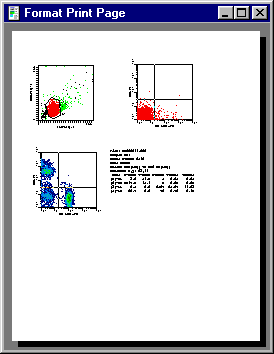Winmdi 29 Free Download Software

WINMDI (Windows Multiple Document Interface for Flow Cytometry) is a free. Documentation, and downloads for WINMDI can be found on the scripps.edu. WinMDI 2.8 is an older 16-bit Windows application and reads most FCS 2.0 compliant files. Wm29w98.exe file was thoroughly tested by our system on Nov 12, 2012 by the three. This archive is 100% safe to download and install. Look at the free or trial alternatives and similar apps to WinMDI software by the tags.
Flow Cytometry Analysis Software CXP2.2 (Beckman Coulter) can only analyze the data generated from Cytomics FC500 Flow Cytometry Analyzer in the core facility. Please do NOT analyze your data on the computer driving the Cytometer. Full version happy wheels. Users need to transfer LMD files to an analysis workstation by CD, USB disk, external hard drive or web base data backup (request instruction from ). BD FACSDiva v6.0 () is available upon request, which can only analyze data collected from BD LSR II Flow Cytometer System in the core facility.
ModFit LT analysis software () is available upon request. FlowJo (Tree Star) is able to analyze flow cytometry data acquired from various instruments (Cytomics FC500, BD LSRII and BD Influx). We have two licenses of the software that can be circulated in labs upon request. There are varieties of free flow cytometry analysis software. WinMDI is the most popular one. This page was last modified on November 29, 2018.
Phagocytosis is central to immunity however a rapid and standardized method is much needed for quantitative assessment of the phagocytic process. We describe a real‐time flow cytometric method to quantitate the phagocytosis of fluorescent latex beads by human monocytes in serum‐free conditions. Effects of buffer composition, temperature, pH, and bead surface on phagocytic rate are described. The innate phagocytic ability of human monocytes from single subjects measured by this method was relatively stable over many months although phagocytosis rate varied as much as two‐fold between individuals. Comparable results were obtained with a simplified method using several mL of whole blood which is suitable for routine clinical application.
This method also allows two‐color flow cytometric measurement of cytosolic calcium levels during the phagocytic uptake of fluorescent beads. © 2013 International Society for Advancement of Cytometry. I ntroduction Phagocytosis is a fundamental biological function of the immune system. While phagocytosis of IgG opsonized particles is an important component of acquired immunity, phagocytosis of non‐opsonized particles plays a key role in innate immunity. Both require recognition of foreign particles by one or more phagocytic receptors on the surface of phagocytes, including Fc receptors, complement receptors, various integrins and scavenger receptors as well as the recently identified P2X7‐non‐muscle myosin heavy chain IIA complex which recognizes a range of non‐opsonized particles including latex beads, and live and dead bacteria. Many studies have shown that failed or defective phagocytic ability is linked to pathogenic states of various age‐related diseases,, autoimmune diseases as well as infectious diseases.
However, there are few studies which have quantitated the phagocytic ability of native or transfected cells to assess possible defects in innate immunity. For this purpose, peripheral blood monocytes and/or neutrophils are a superior model system. However, although phagocytosis of fluorescent latex beads by phagocytes have been studied for several decades -, there has not been a reliable quantitative method to measure phagocytic ability of peripheral blood leukocytes for clinical application. Technical advances in the assessment of phagocytosis have allowed rapid advances in our knowledge of molecular interactions associated with engulfment of particles by phagocytes. Fluorescent microscopy is the basis of traditional methods and has shown rapid rearrangements of the actin cytoskeleton during the phagocytic process. Confocal microscopy has shown that internal membranes within the cell fuse with the plasma membrane during the course of particle ingestion, and that recycling endosomes and endoplasmic reticulum contribute to expansion of the surface membrane,. Flow cytometric assessment of particle engulfment has to some extent replaced microscopic observation particularly as the kinetics of uptake of fluorescent targets by phagocytes can be followed by instruments capable of real‐time measurements in a stirred cuvette at 37°C,.
These assays of phagocytosis by flow cytometry usually include measurements of fluorescence particle uptake by cells pre‐incubated with cytochalasin D (CytD), an inhibitor of F‐actin polymerization and phagocytic cup formation which allows the assay to distinguish engulfment of particles from simple adhesion. Phagocytosis has been widely studied by monitoring the uptake of fluorescent beads or bacteria of 1.0–3.0 μm in diameter or length. However, to date, no published method quantifies particle uptake in real time which is necessary to fully assess the kinetics of phagocytosis. In this study, we describe a quantitative method to measure the phagocytic ability of human monocytes using real‐time two‐color flow cytometry which has been optimized with respect to bead type and amount, temperature, and buffer composition.